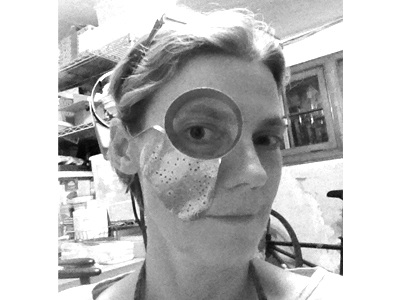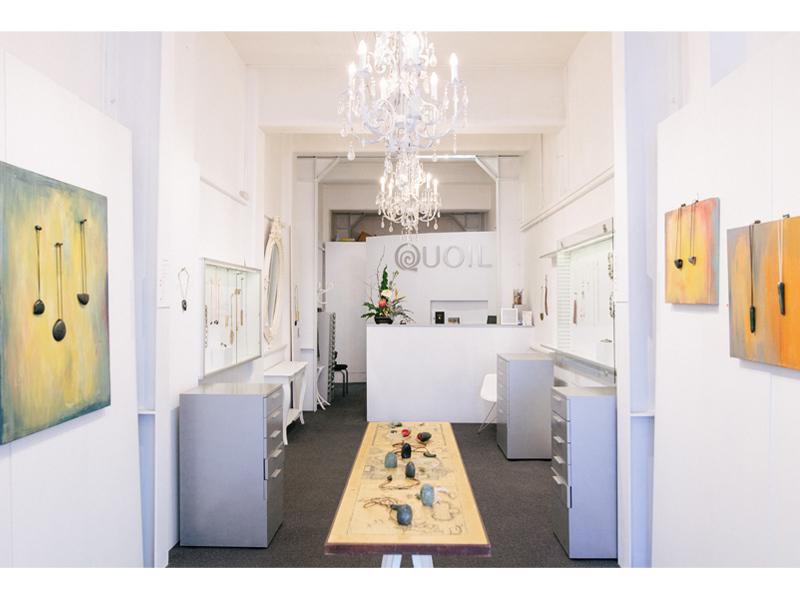
QUOIL is a contemporary jewelry gallery in Wellington, New Zealand, that represents solely New Zealand artists. The breadth of the work represented is refreshing and stands witness to the creative strength of the country. QUOIL’s current exhibition, from December 2016 through January 2017, is LUSTRE, a bright and celebratory group show.
The gallery was started in 1998 by Belinda Hager, and has been under the ownership of jewelry artist Philippa Gee since 2007. Spring Rees, an artist herself, runs the day-to-day gallery operation. She kindly took time from her busy schedule, in the wake of the earthquakes that recently shook the city, to answer my questions and discuss the gallery’s mission, the goals for its future, and the artists it represents.
Adriana G. Radulescu: Spring, the gallery is located in New Zealand’s capital, Wellington, and its name emphasizes that it is a New Zealand gallery. Please describe for AJF’s readers what is in the name.
Spring Rees: Belinda Hager, the original gallery’s owner, liked the word COIL. A jeweler herself, she was inspired by the image of coiled wire and thought it seemed appropriate, but at that time there was a band using that name. QUOIL was her play on words—it turned out to be the archaic spelling!
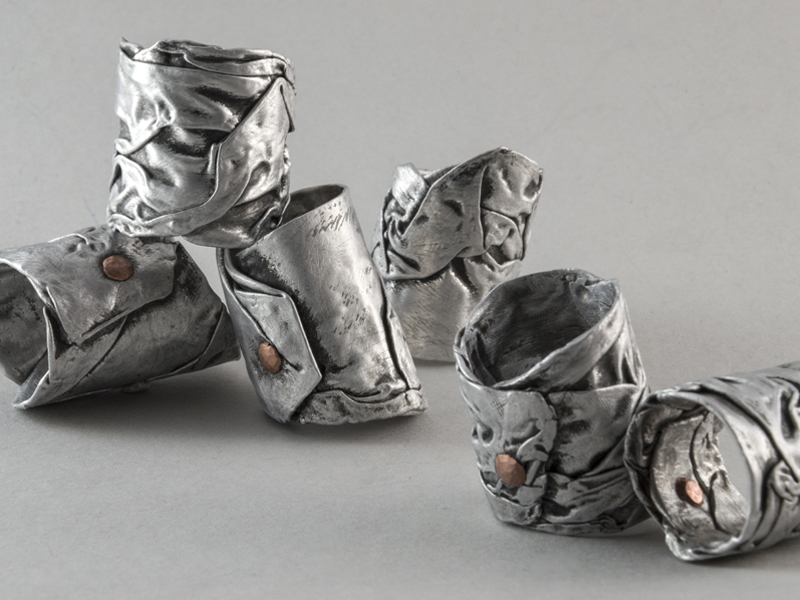
Phillipa Gee is the second owner of the gallery. How did she take over the gallery from artist Belinda Hager? When did QUOIL establish itself as a contemporary jewelry gallery?
Spring Rees: QUOIL started in 1998, as a jewelry workshop and retail space with a few exhibitions per year. By public demand, a program of night jewelry classes was later put into place. Around 2004, the gallery space was refurbished and its format changed to become a permanent exhibition space, with shows every three weeks.
After eight years of running QUOIL, Belinda decided to make more time for her own practice and to accept an artist residency she had been offered overseas. Word went out to makers that she was looking for someone to take over. Phillipa Gee bought the gallery in 2007.
When did you come on board the team, and what are your responsibilities in the gallery?
Spring Rees: Phillipa asked me to join the team when I was still studying at Whitireia Polytechnic, about 10 years ago. With two young kids, I didn’t want to commit to more than a day here and there. By 2010 I found myself working three days a week, and this just evolved to managing the gallery full time because Phillipa wanted to spent some time traveling and renewing her skills and interests with further art jewelry study at Whitireia.
I see my role and responsibilities as multifaceted and including all aspects of running a successful gallery. Day to day: gallery presentation and sales, administration, stocking, orders, supplies, staffing, rosters, and training…
And there’s the scheduling, coordination, and implementation of the monthly exhibitions, working with our creative designer on publicity, photography for posters/invites/ads, and the upkeep of the website.
What makes us special is the “how.” How we welcome and engage with customers to ensure an excellent experience, helping them to find what they’re looking for, and also inspiring them. For those intrigued or challenged by what they see, I’m happy to share my knowledge about the artist, the background behind the individual pieces, and my enthusiasm for contemporary jewelry as a credible art form.
The other half of this equation is how we work with each artist.
Apart from “maintaining” inventory levels, we work with them on new stock pieces and pricing, and on managing orders and commissions effectively and without drama. But more importantly, since the gallery is the link with their audience, we are communicating their ideas and providing feedback from the frontline whilst ensuring that they can make a living from art in a small country!
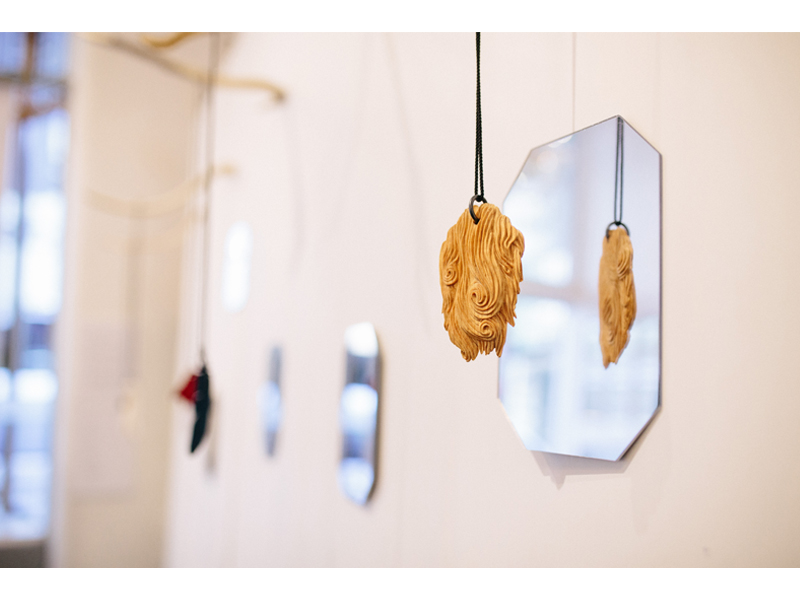
What makes the gallery specific to New Zealand?
Spring Rees: We have chosen to represent exclusively jewelry makers who are from New Zealand or live here; we strive to foster pride, support, and loyalty for New Zealand artists.
Your website notes that the artists represented by QUOIL are born in New Zealand, or artists that moved to New Zealand and now live there. What are the stylistic differences, if any, between the New Zealand-born artists and those from other cultures? Does the local culture influence the European and Asian artists that you represent? Have you noticed a transformation in their concepts, their vision, or their use of materials after relocating from their native lands?
Spring Rees: Most of our overseas-born artists have been here a long time, at least 10 years, and in my case almost 40(!), so it’s hard to say how their concepts or vision have been transformed by moving here. I guess any new experiences are more intense initially and, perceived through different cultural framing, they could elicit a different kind of emotional response.
Artists and makers are generally sensitive to their environment, like sponges. We are influenced by our immediate surroundings and we create to express our thoughts, to reflect what’s happening to us and around us. How we perceive those experiences will always be informed by our heritage and the cultural framing of our upbringing.
I was born in Hong Kong to a Chinese mother and Kiwi father; even after my being in New Zealand for almost 40 years, there’s an underlying depth of hidden symbolism in my work exploring the notions of hybrid identity.
Thinking of some of the other jewelers not born here, I can see a variety of scenarios that could influence them, or set them apart stylistically.
I’d imagine some jewelers trained in strong historical traditions of gold or silversmithing might have well-prescribed processes that are technically “correct,” or have the belief that use of precious metals or gemstones on a piece is mandatory for it to be deemed worthy of being called jewelry. Traditionally trained jewelers may have to work a little harder to unlearn, to shake those constraints, to forge a unique voice.
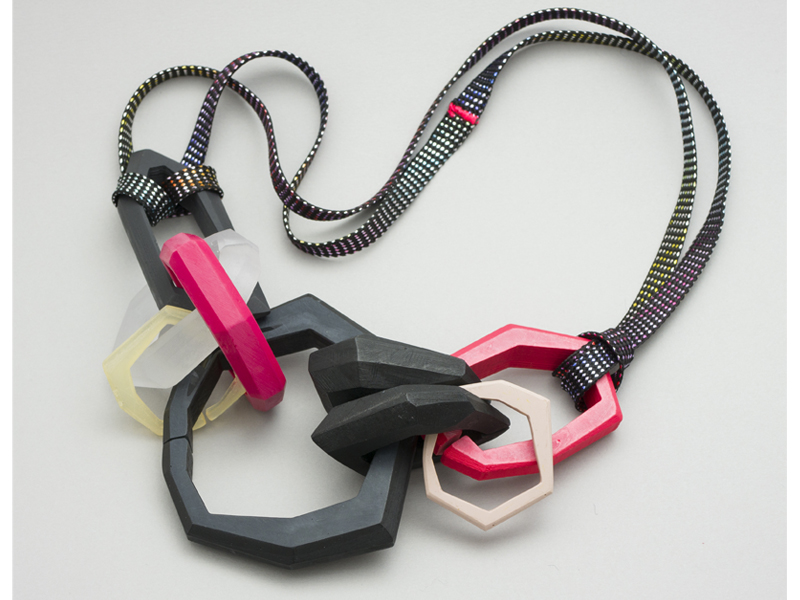
So much depends on the individual, and I am generalizing, but it seems to me that New Zealand makers, or those who studied art versus traditional silversmithing, may have a slight advantage in attitude, which translates to their objects. We are essentially a DIY culture, and many of us are simply “self trained” and happy to blur the lines between art and jewelry.
Concerning the question on use of material, are you referring to our love affair with and use of natural found materials, affectionately known as the “stone, bone, and shell movement” in the 80s?
I found an interesting take in this comment from one of our artists, Maike Barteldres, who moved here from the UK in 2007: “There is a lot of nature here and very few people who have interfered with it. While in the UK there was human evidence everywhere, in NZ nature has the tendency to take over again. In the UK human evidence added a certain interest. In NZ it feels like an intrusion.”

Our materials are really not so different from what is available in many other countries. But our location within the Pacific, and New Zealand being an island nation, have a strong influence on the way we see the gifts we find washed up on our shores.
The connection to the sea and the land is deeply rooted within the cultural identity and spiritual belief of the Māori, the indigenous people of Aotearoa. Pounamu (New Zealand nephrite jade), timber, bone, and shell objects have long been seen as vessels for mana (power), wairua (spirit), or ancestral knowledge. Such Taonga (treasures) are held in high regard, and are traditionally much more valuable than gold. I wonder if some of this reverence rubbed off on the early pioneers and settlers who, in order to survive here, had to engage with the local people, their culture and ways, and had to learn how to live off the land and sea.

What are the most important characteristics of an artist’s work that trigger your interest and excite you as a gallerist? What is your process of choosing the artists you represent?
Spring Rees: For me personally, it’s the presence of one piece or a collection. Are my pupils dilated? Is there immediate intrigue making me want to pick it up or look at it just a tad longer? The process of choosing artists begins here, then Phillipa and I discuss whether or not they will sit well with the group we already represent, and if we could have a mutually beneficial relationship.
Some practical considerations are: Do we have similar-looking work already? Does the work have a unique identity? Is it made well? Is the artist dedicated and willing to work with us in a professional way? And of course … can we sell it?
I’m also keen to know what aspirations they have as artists and if we can help them in that journey.
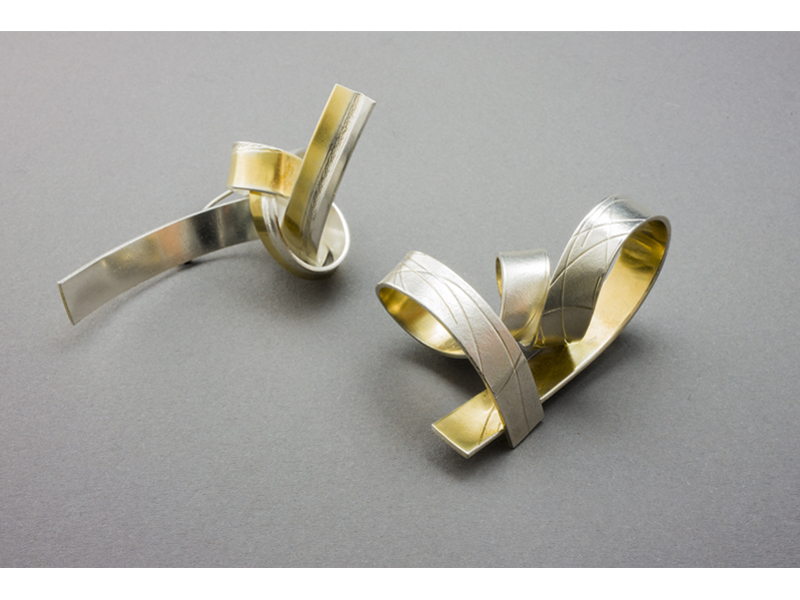
The gallery represents a mix of silversmiths and makers who engage with other material cultures, like Neke Moa, Jane Dodd, Nik Hanton, or Jen Laracy. How do these different practices coexist, and how do your clients react to their juxtaposition?
Spring Rees: I see QUOIL as primarily an exhibiting gallery showcasing New Zealand talent in the form of contemporary jewelers. It would be pretty boring if the 50-plus artists didn’t use a variety of materials and methods. There’s always interesting work displayed on the walls, and when we greet our visitors we introduce the current exhibition and check to see if they’re looking for something specific. I think any juxtaposition can work with careful placement.
People visiting us come for many reasons, so I feel there is plenty of room for diversity.
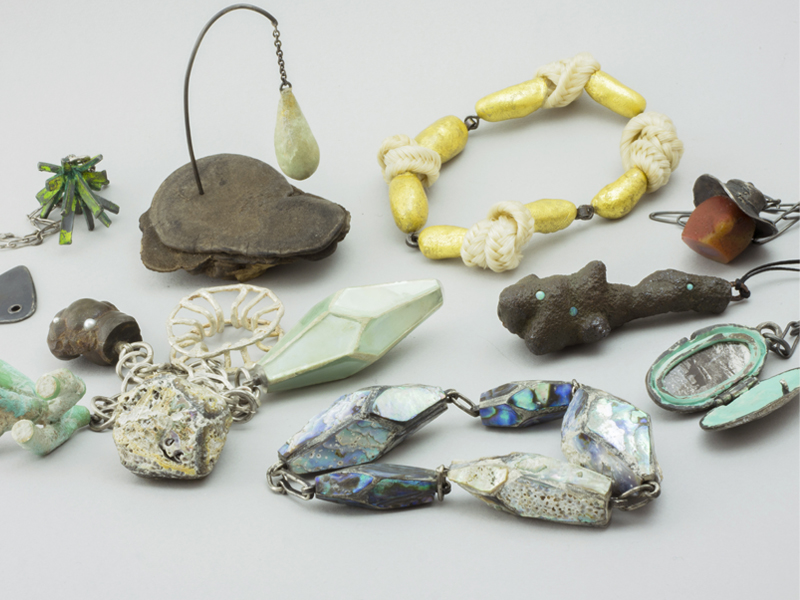
How do you decide which artists’ exhibitions to showcase? Are there recurring themes for group shows? How do you curate your exhibitions?
Spring Rees: We have a loose format, 12 shows annually. The solos and small group exhibitions are by invitation. We also encourage jewelers to keep us informed when they’re making new or special work and if they’re keen to submit a proposal.
Solo exhibitions are for our more seasoned artists, Some exhibitions feature small groups of between two to four invited artists who develop together a concept such as FOURtune, or they’re selected because of the group’s congruity, such as LOCALS—three cool Wellingtonians.
Newer jewelers often appreciate the small group shows as an opportunity to exhibit more experimental works. The group shows provide the opportunity to exhibit their work along their peers’ and that bit of encouragement to put themselves out there, even though their work is already worthy.
We have some recurring shows that our customers look forward to every year, like the RING SHOW and ATTACHMENT (brooches), featuring new work by all our jewelers. These, and our occasional themed showcases, are meaningful to artists who like to stretch their creative boundaries within the confines of a prescribed set of ideas.
The showcases are a curated selection of pieces—new ones and some from the gallery’s inventory. LUSTRE is our December showcase.
On curating … I generally approach a few artists to discuss specific exhibition ideas or to follow up on their proposals to show new work. Leading up to an exhibition, I’m here to support them, offer any direction, and talk about how to best illustrate the concepts around their work through display options. I’m happy to try accommodating their wishes where possible. I’ll gather the necessary information and photograph the work for our designer to produce promotional material, and, once the work gets here, we make the final selections and group the work for installation. Ultimately, I am responsible for making sure the show looks great and that the work comes together in a cohesive manner.
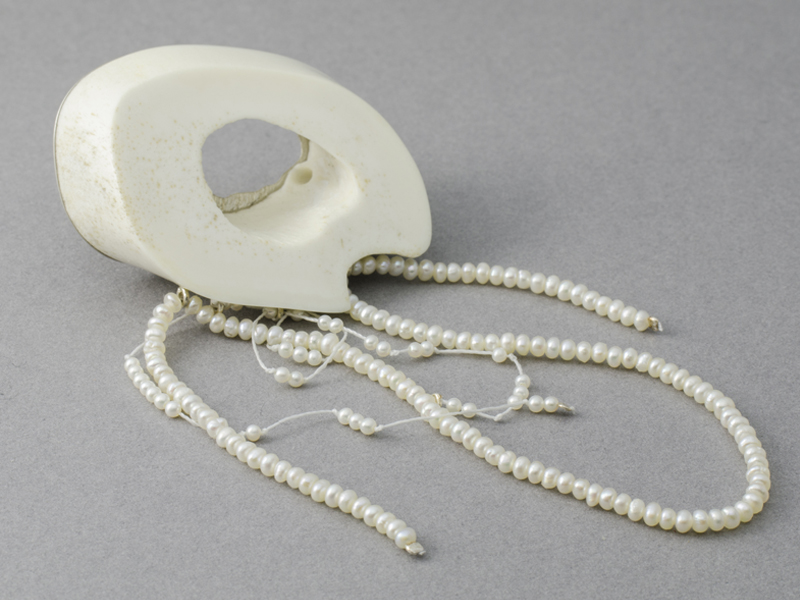
Can you tell us about the sort of clients you have? Are they local? International? Do they consider themselves to be collectors?
Spring Rees: We have regulars who are collectors, but we encourage all our customers to learn about our artists and to consider acquiring their own collections.
QUOIL has a healthy mix of clients—the majority are regulars, Kiwis looking for gifts and who love that we support the “New Zealand made/shop local” ethos.
There are locals looking for visual inspiration or some relief from their work day; lots of New Zealanders traveling to Wellington from other places for work or for a break; curious overseas tourists seeking either something special to take home or to learn about New Zealand artists, and of course the art/jewelry community supporting each other.
How does the gallery promote its artists to the general public?
Spring Rees: QUOIL promotes each exhibition through our direct mailing lists, print advertising (newspapers, flyers), and on our website and other online social media platforms. Our website profiles each artist we represent and shows images of their work. We also promote ourselves through art magazines, and through various guides.
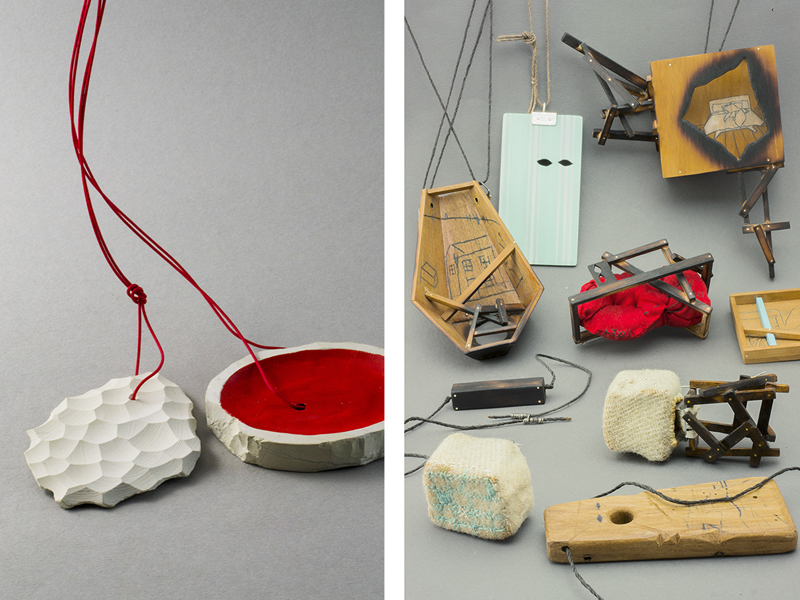
On your current homepage, you congratulate four makers who have been selected for Schmuck 2017—only one of whom you actually represent. Would you say that there is an esprit de corps within the New Zealand contemporary jewelry scene that transcends commercial interest?
Spring Rees: I think that it’s important to acknowledge the achievements of Kiwi jewelers when we can. With only 60 jewelers selected for Schmuck from around the world, I feel proud of each of the selected New Zealand artists, as they are in a way representing our entire jewelry community on a worldwide stage.
We are a relatively small country, and there are only a handful of art institutions where many of us trained, so we mostly know each other. Through the visionary networking efforts of a few special people such as Peter Deckers, a strong and supportive community of makers emerged. I think there’s no loss in uplifting each other publicly—there’s more to jewelry than simply the commercial interest of a single business. Art jewelry is a worldwide movement of which we are a part.
You and Phillipa are both jewelry makers. How do you balance your life as an artist and gallerist?
Spring Rees: Phillipa returned to her jewelry studies in 2014 and completed her post-grad last year. Materia Juxta was her solo exhibition last August.
Between family and QUOIL, there’s been little time to indulge my own creative endeavors. I’ve participated in a few group exhibitions and support others by attending theirs. I hope to find a bit more balance in 2017.
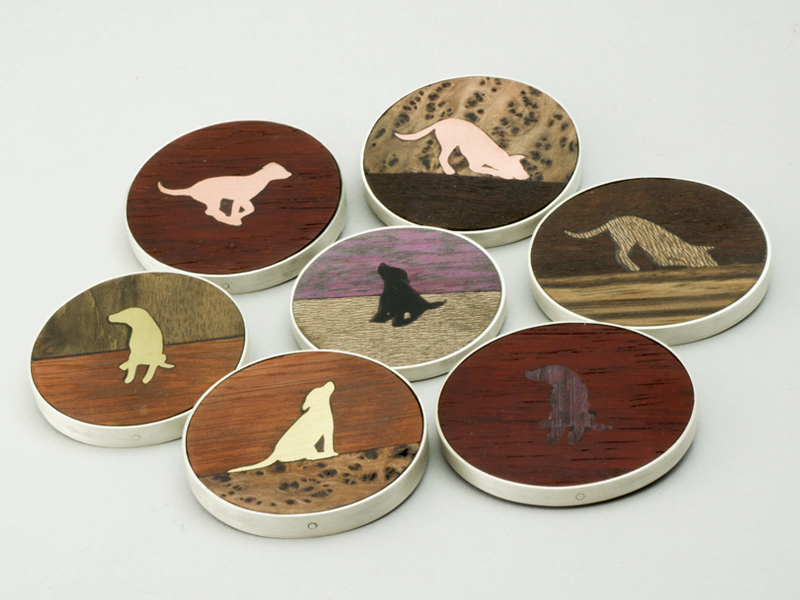
What advice do you have for young artists starting their career?
Spring Rees: Focus on developing your own style and identity. Don’t be in too much of a hurry about this—make a lot of work, review it, cull it, and then develop the work further. Ensure that your work is well made. Document your progress and thinking, refine your ideas and concepts so that you can talk about the work and express your ideas clearly verbally or in writing. Back yourself. Not everyone will like what you make … make it anyway!
How would you compare an artist’s representation in a brick-and-mortar gallery to an online representation?
Spring Rees: I think the main difference is the direct contact we have with the public and our ability to talk to them on a personal level.
QUOIL is a small gallery representing about 50 artists that we hand picked. We pride ourselves on getting to know them, take a personal interest in their work, and keep up with their recent achievements to best represent them.
Our genuine enthusiasm and knowledge has an immediate effect with the gallery’s visitors—it is a very interactive process. Listening to our clients allows us to assess their needs and helps to match makers to customers/collectors.
We also have an online presence, but that’s generally just a starting point. I try to take photographs that make the pieces desirable but also look realistic! Very few people will purchase on the strength of a single photo. Most people want to be able to touch the pieces and see how they would relate to the body when worn.
What are your goals for QUOIL’s future?
Spring Rees: Since QUOIL’s direction is Phillipa’s domain, I asked her this question! She said, “My goals are to continue to support our jewelers by promoting them and their work, and to provide our customers with a great selection of jewelry while giving great service by knowledgeable staff. I’d like to take another look at our mix of jewelers to ensure that QUOIL reflects how I see contemporary jewelry currently; there is now more acceptance for using alternative or nonprecious materials, and an expectation that the jewelry will contain a high degree of artistry and design.”
Thank you!

INDEX IMAGE: Spring Rees in the entrance of QUOIL, Wellington, New Zealand, photo: Billie Brook
